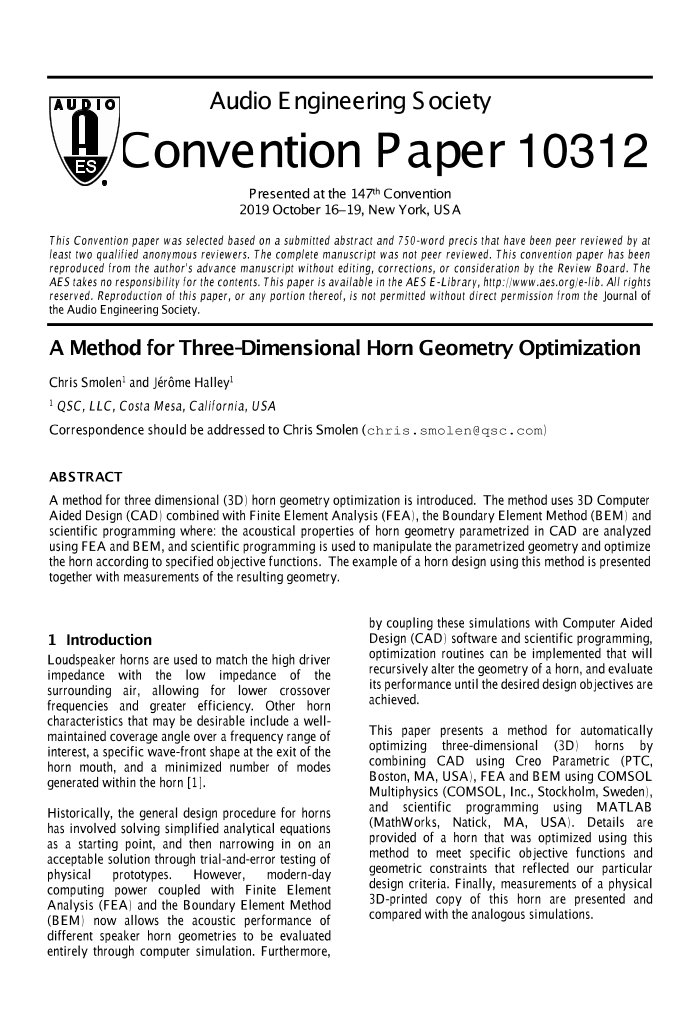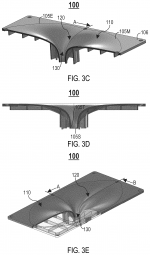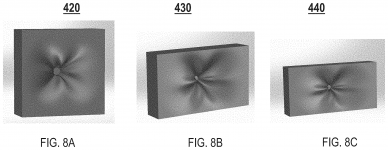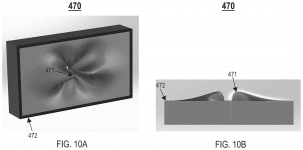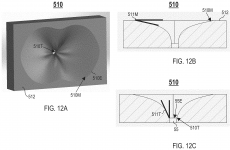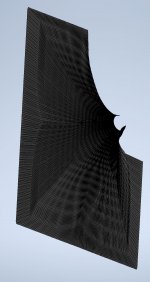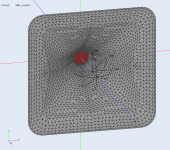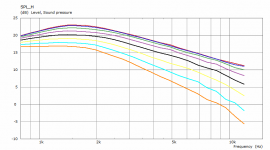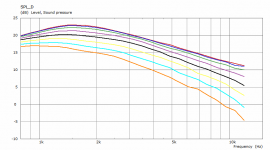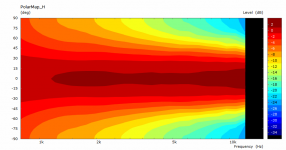Thank you for that, only had a quick look so far but, yes, indeed impressive.
Best wishes
David
The combination of Matlab/Comsol works fine. I implemented something similar (I am not acociated with the Author of the aforementioned paper) by myself and did show it previusly here in this topic.
My current implementation takes almost 2 Weeks for an optimisation in two domensions. Which is part due to my Hardware (8 core Rayzen) and part due to Comsol as the calculation and post processing is rather slow (k-wave manages some higher frequency stuff in fraction of what Comsol needs but does not support objects in the frequency domain interface...). I tried to find other frequency domain solvers that work directly in Matlab and maybe even have GPU support but no luck so far (in finding something that I actually understand how to interface...)
Also, I do not use a CAD Programm currently ( My goal is to fully run it in Matlab) but that may Change again as I am having trouble post processing the finished Model.
My current implementation takes almost 2 Weeks for an optimisation in two domensions. Which is part due to my Hardware (8 core Rayzen) and part due to Comsol as the calculation and post processing is rather slow (k-wave manages some higher frequency stuff in fraction of what Comsol needs but does not support objects in the frequency domain interface...). I tried to find other frequency domain solvers that work directly in Matlab and maybe even have GPU support but no luck so far (in finding something that I actually understand how to interface...)
Also, I do not use a CAD Programm currently ( My goal is to fully run it in Matlab) but that may Change again as I am having trouble post processing the finished Model.
Interesting 3eepoint!
The rectal guide was discussed earlier in this thread. Now it is also patented by Samsung Electronics.
The rectal guide was discussed earlier in this thread. Now it is also patented by Samsung Electronics.
Attachments
BTW, that shape is simply a result of the way they allowed the profile curves to change, which was very basic and still quite limited rule, IMHO (just bezier cubics, IIRC). So it is optimized in a sense that it may perform "best" within the limitations given. Which is of course true for any such optimization. Anyway, good luck with that!The rectal guide was discussed earlier in this thread. Now it is also patented by Samsung Electronics.
BTW, that shape is simply a result of the way they allowed the profile curves to change, which was very basic and still quite limited rule, IMHO (just bezier cubics, IIRC). So it is optimized in a sense that it may perform "best" within the limitations given. Which is of course true for any such optimization. Anyway, good luck with that!
Agreed. In the last 10 years we have seen horns with knuckles, mumbs, ridges and so on. Neither of these features has resulted in an evolutionary performance improvement.
And that would be...?... Neither of these features has resulted in an evolutionary performance improvement.
No I really tried to imagine an evolutionary performance improvement in horns but really can't think of any. Maybe that's also the reason I won't ever come up with any 
Interferences? Well, I "could" imagine a driver+horn combo reaching a pure spherical wavefront - that would be an improvement!
Interferences? Well, I "could" imagine a driver+horn combo reaching a pure spherical wavefront - that would be an improvement!
Someone is confused, maybe me!
Ro808 stated:
Which, to me, means that these features have not resulted in any improvements.
but Mabat says:
Which says, to me, the exact same thing.
Do you guys agree or disagree? It's not clear.
And yes a "pure spherical wavefront" would be great, but you should also state that this should occur across the bandwidth. A spherical wavefront at one frequency is not so difficult, but at all frequencies, it is likely impossible.
Ro808 stated:
Neither of these features has resulted in an evolutionary performance improvement.
Which, to me, means that these features have not resulted in any improvements.
but Mabat says:
No I really tried to imagine an evolutionary performance improvement in horns but really can't think of any.
Which says, to me, the exact same thing.
Do you guys agree or disagree? It's not clear.
I too was unclear what was meant by "interference".Interferences? Well, I "could" imagine a driver+horn combo reaching a pure spherical wavefront - that would be an improvement!
And yes a "pure spherical wavefront" would be great, but you should also state that this should occur across the bandwidth. A spherical wavefront at one frequency is not so difficult, but at all frequencies, it is likely impossible.
Last edited:
This is also funny: Today, solely by mistake, I tried something I didn't want (what could be considered as an error), but hey, the result is one of the best I have seen -
Attachments
And that would be...?
I suppose, revolutionary improvement would mean
* Flat acoustic loading from 200-300Hz and up to the last audio octave (e.g. like Heavise or step Sigmoid function).
* Constant directivity in the same frequency range. (I suppose beamwidth of -+(20-30)° in all directions would be ok, at least for home audio).
*Horn-related acoustic nonlinearities would be comparable to that of the direct radiator.
*Perhaps, some kind of numerical criterion should specify a minimum value of HOMs amount.
"Revolutionary design" should improve all the point above at the same time. But as we know, "the horn reality" is completely different. Numerical optimisation helps to find a certain balance of contradictory horn parameters
Last edited:
- Home
- Loudspeakers
- Multi-Way
- Acoustic Horn Design – The Easy Way (Ath4)
